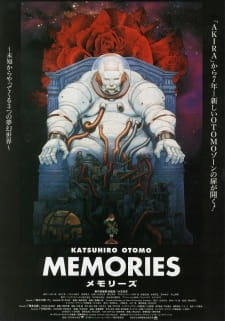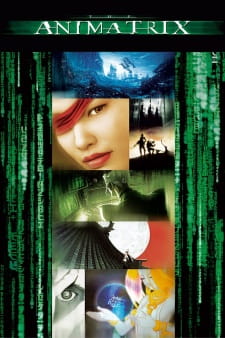Jul 17, 2021
Amanatsu was not the first shot that the studio Kamikaze Douga gave at short sci-fi music videos or movies. The studio dedicates itself to 3DCG animation, if we are to trust the studio's official channel on YouTube — where you can incidentally watch Amanatsu. It is great that studios like Kamikaze Douga use their time and resources to establish a brand presence on social media, thus permitting through participative culture the emergence of a contemporary archive.
The synopsis is concise but cryptic. A youthful girl, already yearning for death? Death, as in hers, or the destruction of "life" in general? The robot part leaves however no
...
room for misinterpretation, assuming a caretaker nature. The near future in this short movie thus seems to be a technologically advanced utopia... At least when it comes to a society of consumption. The part about "moving to eternity" is a bit strange, and even after watching the movie, I don't feel like I understand its meaning.
Story (5) — When it comes to the story of Amanatsu, there isn't really a deep one. We are introduced to a post-war world, of course, and an advanced society reminds us of daily life, with a school system and commuting infrastructure. The story is that of an interpersonal drama, but the characters are briefly introduced and are almost unidimensional. Therefore, the part the anime gains in characterization is lost in the story department.
Art (8) — Using 3DCG at that time can be considered a bold move, but the studio built itself on the technology. The robot isn't as startling as the humans, so half of the character design is acceptable. The yellow or orange effect was used to convey something, perhaps an idea of the renewal of life (or its simulation? again, it's cryptic).
Sound (8) — The orchestration of the music was futurish-sounding, alright. At some point, lyrics were present but they weren't clear. The dubbing portion is small but can convey anecdotal detail to be more relatable. At some point, the sound is diegetic, that of wind, and is atmospherical.
Character (7) — The two characters really mattering are the self-loating girl (perhaps feeling neglected?, her father seems popular on TV), and her robot, seemingly taking care of her even though she thrashes the machine. Mutilation and suicidal thoughts are used to convey the extent of the girl's sentiments, and the robot remains loyal to her. Therefore, the show can be seen as the interpersonal drama of being left out and finding comfort in the artificiality of a technological utopia.
Enjoyment (8) — If this part is dedicated to rating satisfaction, though not everything in art is aiming at satisfaction, I shall at least indicate that this spectacle didn't seem to aim at being displeasing, regardless of the presence of mutilation. My favorite part was the use of rhythmicality, as the girl counts to 1, to 2 and to 3 in three separate instances... Other than that, the musical part was rather nice.
Overall (7) — The anime went for simplicity with somewhat gorgeous art. At least, its characterization ended up not feeling a loss of time. The theme of an interpersonal drama fighting neglect in a sci-fi world is new to me. It did help show the potential of the medium, making an impact with how short it is, and the show made two appearances at an important industrial event (Tokyo International Anime Fair, both in 2009 and 2010). Considering this last part, Amanatsu gains historical and cultural significance, though only having what it takes to remain an anecdote.
Reviewer’s Rating: 7
What did you think of this review?
Nice
 0
0
Love it
 0
0
Funny
 0
0
Confusing
 0
0
Well-written
 0
0
Creative
 0
0Show all



 (1).png)




















